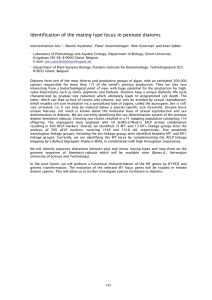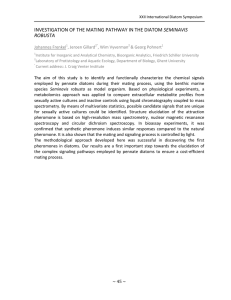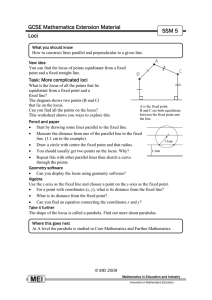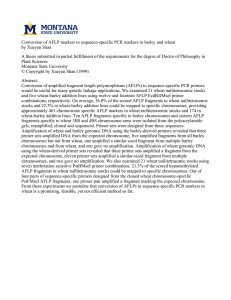IDENTIFICATION OF THE MATING TYPE LOCUS IN PENNATE DIATOMS Ives Vanstechelman , Wim Vyverman
advertisement
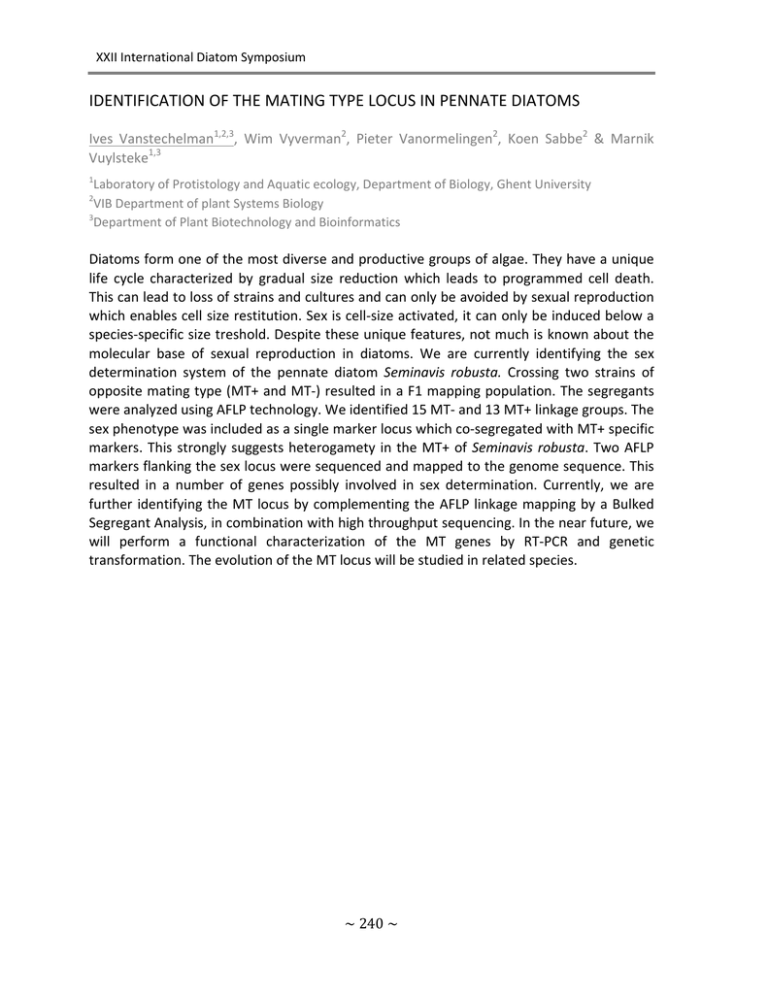
XXII International Diatom Symposium IDENTIFICATION OF THE MATING TYPE LOCUS IN PENNATE DIATOMS Ives Vanstechelman1,2,3, Wim Vyverman2, Pieter Vanormelingen2, Koen Sabbe2 & Marnik Vuylsteke1,3 1 Laboratory of Protistology and Aquatic ecology, Department of Biology, Ghent University VIB Department of plant Systems Biology 3 Department of Plant Biotechnology and Bioinformatics 2 Diatoms form one of the most diverse and productive groups of algae. They have a unique life cycle characterized by gradual size reduction which leads to programmed cell death. This can lead to loss of strains and cultures and can only be avoided by sexual reproduction which enables cell size restitution. Sex is cell‐size activated, it can only be induced below a species‐specific size treshold. Despite these unique features, not much is known about the molecular base of sexual reproduction in diatoms. We are currently identifying the sex determination system of the pennate diatom Seminavis robusta. Crossing two strains of opposite mating type (MT+ and MT‐) resulted in a F1 mapping population. The segregants were analyzed using AFLP technology. We identified 15 MT‐ and 13 MT+ linkage groups. The sex phenotype was included as a single marker locus which co‐segregated with MT+ specific markers. This strongly suggests heterogamety in the MT+ of Seminavis robusta. Two AFLP markers flanking the sex locus were sequenced and mapped to the genome sequence. This resulted in a number of genes possibly involved in sex determination. Currently, we are further identifying the MT locus by complementing the AFLP linkage mapping by a Bulked Segregant Analysis, in combination with high throughput sequencing. In the near future, we will perform a functional characterization of the MT genes by RT‐PCR and genetic transformation. The evolution of the MT locus will be studied in related species. ~ 240 ~
